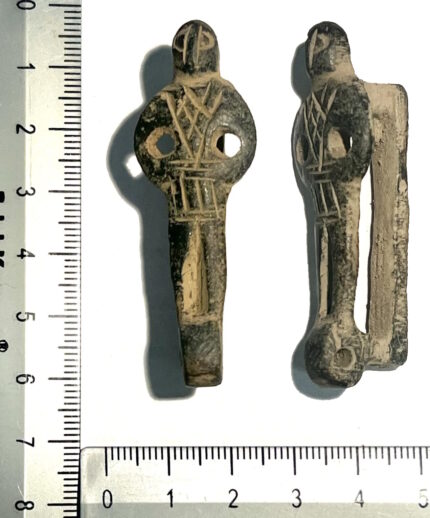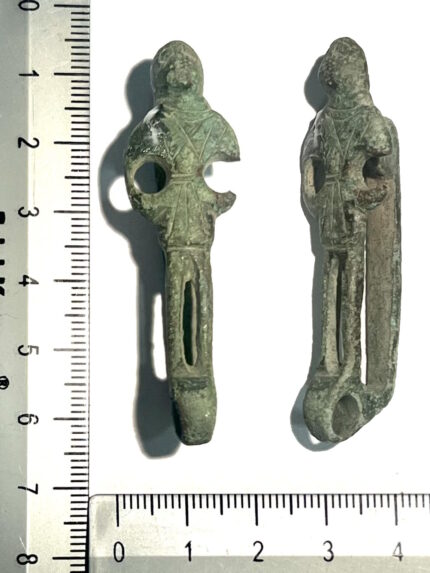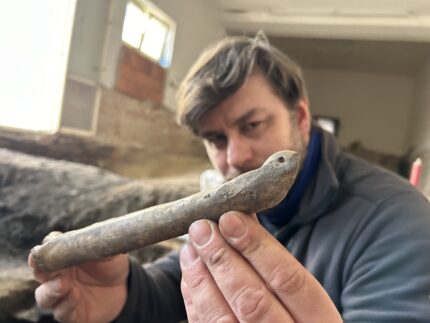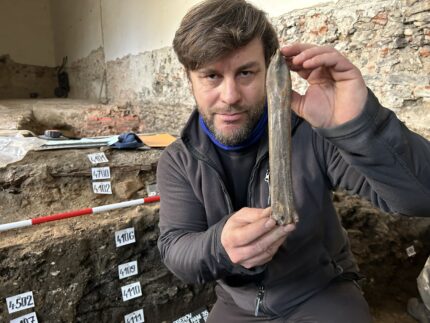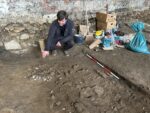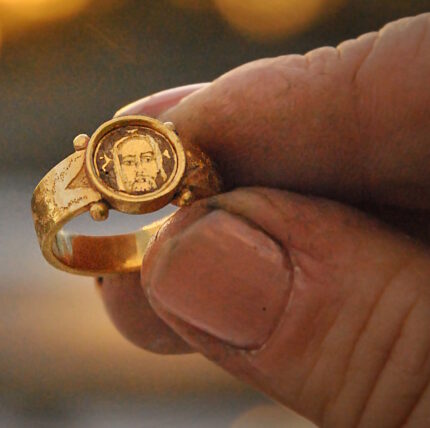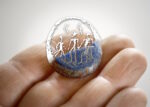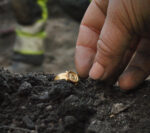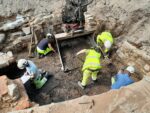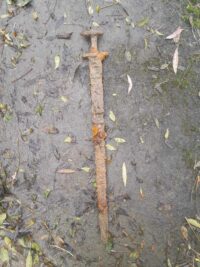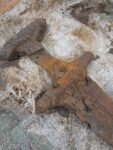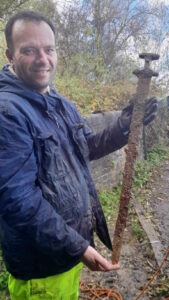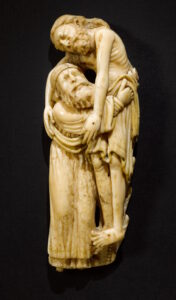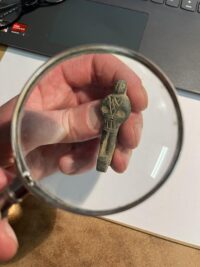 A rare medieval belt loop used to hang keys or a purse has been discovered near Kamień Pomorski in northwestern Poland. It is one of only about 15 of this type of belt loop known, and the only one of them found in Poland. It was discovered by metal detectorist Damian Tomczyk scanning the area with the approval of local heritage authorities.
A rare medieval belt loop used to hang keys or a purse has been discovered near Kamień Pomorski in northwestern Poland. It is one of only about 15 of this type of belt loop known, and the only one of them found in Poland. It was discovered by metal detectorist Damian Tomczyk scanning the area with the approval of local heritage authorities.
The bronze figure is 2.2 inches high and depicts an anthropomorphic figure with hands on hips forming circular divots on the side of the torso. Diagonal, horizontal and vertical cuts on the surface of the chest and waist convey the draping of a tunic typical of the Late Gothic period. A triangular cutout separates the two legs that appear to be clad in hose. The figure stands on a rounded shape with a hole where keys or an alms purse or pouch would have hung. A belt would be threaded through an open rectangular mount on the back.
This type of belt loop was produced in southern Germany, created by Bavarian craftsmen probably in Nuremberg which was a center of bronze work since the 14th century. Indeed, of the surviving examples, 12 of them were found in Germany, most of them in Bavaria.
The finder has donated the artifact to the Kamień Land History Museum which has two late medieval bronze belt loops in its collection, one of them with the similar cross-hatched garment and arm holes. This newly-discovered example is larger and in better condition.
